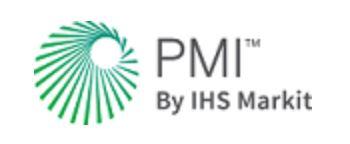January saw the Global Purchasing Managers’ Index (PMI) for manufacturing produced by J P Morgan using the data from IHS Markit fall back to 53.2; this is the lowest reading for 15 months but it does mean that it has been positive (i.e. above 50) for the past 19 months. Among the headlines at a global level, they note that the pace of output growth eased in all of the sub-sectors (investment goods remains the strongest of these) and that new export orders fell for the first time for 17 months.
Turning to the UK, the manufacturing PMI has been positive for 20 months, although the reading eased to 57.3. The detail shows why we need to treat these high readings with some care as output growth accelerated in January in response to order backlogs and a slight improvement in export demand; however, the dip in the index was due to slower growth of new orders and, most importantly, a further easing in the rate of increase of suppliers delivery times. Because longer delivery times are regarded as a sign of activity rising, an easing in the rate of growth reduces the index in the calculation.
In the Euro-zone, the overall manufacturing PMI improved to its highest level since August 2021 with production, new orders and employment all registering faster increase than at the end of last year and tentative signs, as in the UK, that supply chain issues may be starting to ease. However, this headline hides a range of trends in the individual countries with a sharp fall in Italy (the second largest among the countries we cover) and, to a lesser extent in Greece, more than balanced by strong increases in Austria and Germany – the former had the most significant improvements in their manufacturing PMI of any of the countries in this note – and more modest improvements in the Netherlands and Ireland, while France and Spain were flat. All three of the sub-sectors saw an improvement in January, with investment goods still the best performing.
Elsewhere in Europe, we have to start with Hungary; it appears that the very sharp increase we saw in December may have been an anomaly as this was more than reversed with the January reading which fell back to 50.7 (52.2 in November and 65.5 in December) which is the lowest here since March 2021 – this reduction is the largest this month. Other than that, there was a modest fall in the manufacturing PMI in Turkey and Poland, it was broadly unchanged in Russia, the Czech Republic and Sweden and improved in Switzerland which retains its position of having the highest reading in our coverage.
The 4 countries we cover in the Americas all saw a reduction in their manufacturing PMI reading with this being significant in the USA, Brazil and Mexico but only marginal in Canada which now has the highest reading in the region. For Brazil and Mexico, this represents a further weaking in what were already negative PMI’s (i.e. below 50) putting them at the bottom of the rankings for the countries that we report on.
In Asia, China has been within a point of neutrality since last July and the latest reading saw it fall back into negative territory with their lowest reading since February 2020 at 49.1. There was also a fall in the PMI for India (54.0) and, more modestly, in Taiwan (55.1), while Japan (55.4) saw their manufacturing PMI increase to a level only exceeded once (February 2014) in the survey history; South Korea also recorded a modest increase in the PMI with output there growing for the first time in 4 months. The ASEAN group of countries overall saw an unchanged reading for the manufacturing PMI although with a mix of trends between the countries; Myanmar remains in negative territory and the Philippines slipped to a neutral level of exactly 50.
The IHS Markit PMI reports for major economies around the world are available from their web-site at https://www.markiteconomics.com/Public/Release/PressReleases and our summary charts report is available to download below. You should note however, that the PMI readings for Hungary, Sweden and Switzerland are not compiled by IHS Markit but can be found with an appropriate internet search.

